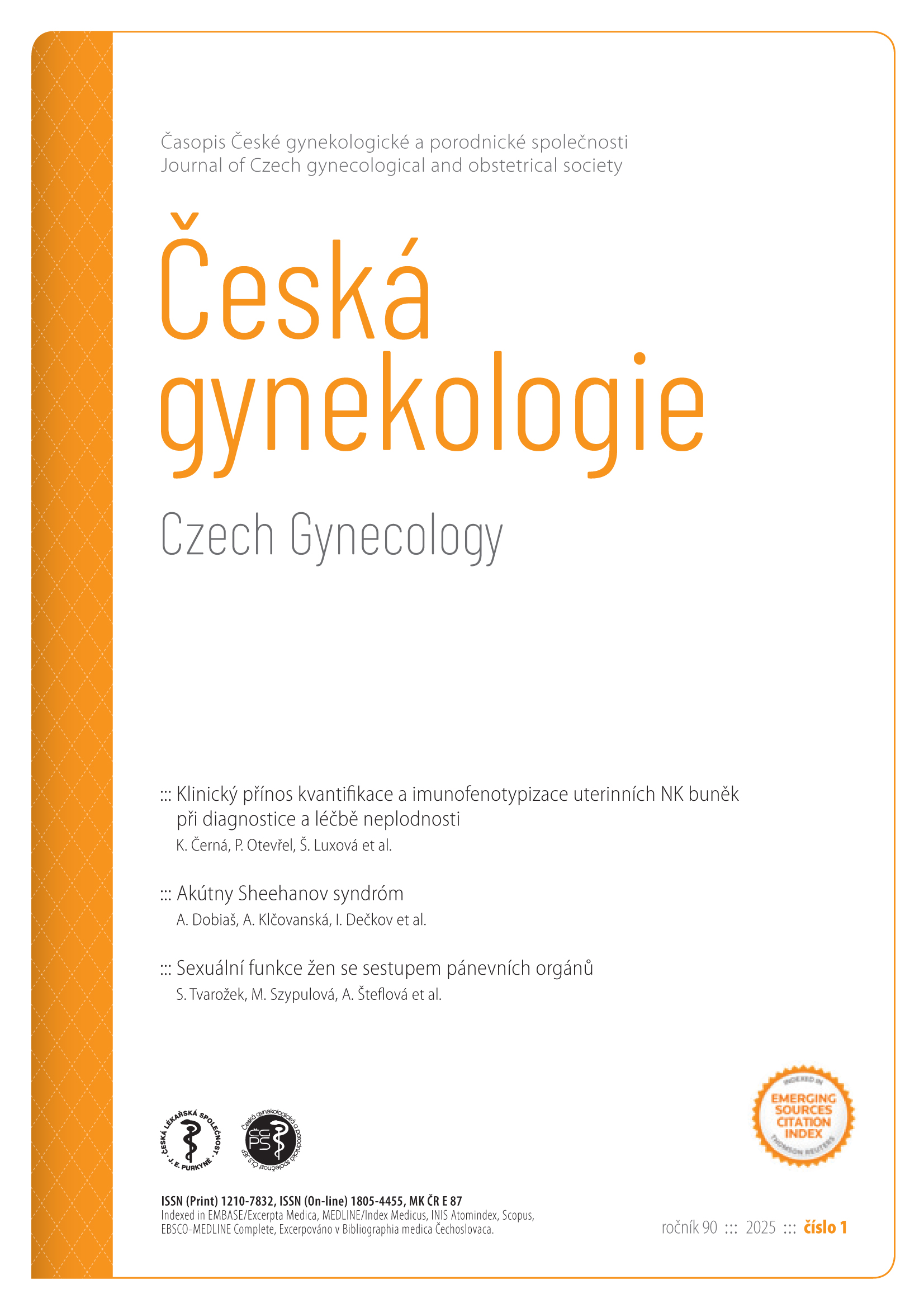Clinical significance of quantification and immunophenotyping of uterine NK cells in the diagnosis and treatment of infertility
Keywords:
uterine NK cells, lymphocyte immunophenotyping, in vitro fertilization, recurrent implantation failure, habitual miscarriage, immunomodulatory therapyAbstract
Introduction and objective: Uterine NK (uNK) cells, a specialized subpopulation of natural killer (NK) lymphocytes located in the endometrium, play a crucial role in regulating the immune response and in the process of embryo implantation. This study aims to retrospectively analyze the outcomes of in vitro fertilization (IVF) treatment in a cohort of women who underwent uNK cell immunophenotyping with subsequent immunomodulatory therapy applied based on the results. Methods: The study included 122 patients who underwent uNK cell immunophenotyping between April and December 2023. Immunophenotyping was performed using flow cytometry. Patients were categorized into four groups according to their uNK cell phenotypes: normal findings, low absolute and relative numbers of uNK cells (LOW-IMMUNE profile), low numbers of uNK cells combined with the shift towards the cytotoxic uNKc dim immunophenotype (MIXED-IMMUNE profile), and normal numbers of uNK cells, but an undesirable shift in the ratio of cytotoxic to regulatory uNK cells towards the cytotoxic uNK dim phenotype (OVER-IMMUNE profile). Embryo transfer outcomes and the occurrence of miscarriages up to the 12th week of pregnancy were evaluated in each group. Results: The highest clinical pregnancy rate was observed in the treated OVER-IMMUNE group (70%), followed by the MIXED-IMMUNE group (60%). The LOW-IMMUNE group did not differ significantly from the untreated NORMAL group (P = 0.205). Insufficient immune activation (LOW-IMMUNE profile) was significantly associated with first-trimester pregnancy loss (P < 0.0001). Conclusion: This study provides new insights into the potential benefits of uNK cell immunophenotyping and subsequent immunomodulatory therapy in treating fertility disorders. While the results indicate possible clinical advantages, further research is necessary to confirm these findings and elucidate the mechanisms leading to improved outcomes in assisted reproductive techniques.


